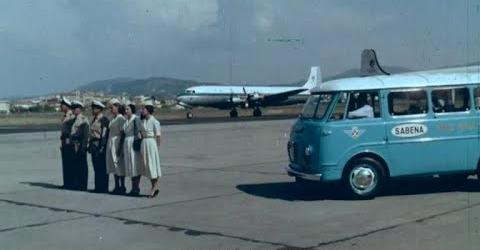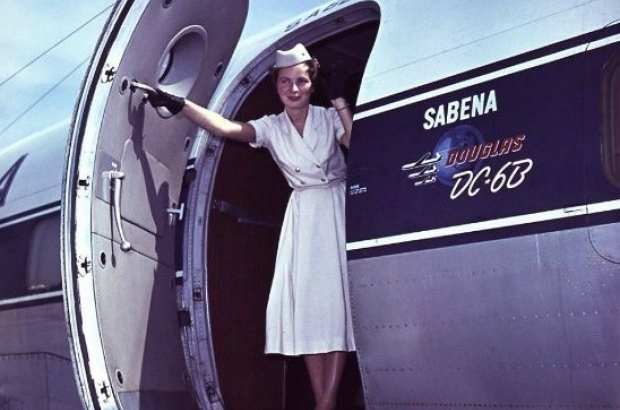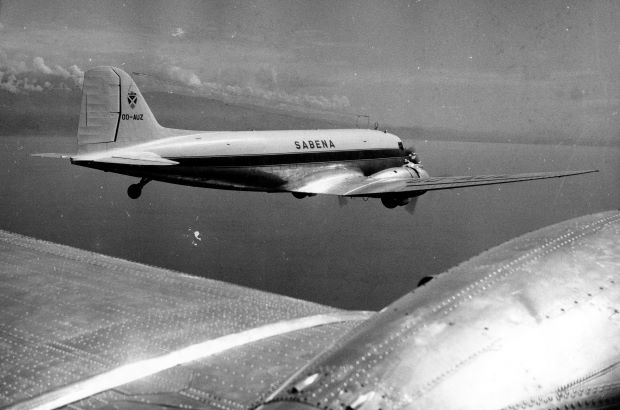- Daily & Weekly newsletters
- Buy & download The Bulletin
- Comment on our articles
Belgium recalls its aviation history on 100th anniversary of founding of former state airline, Sabena
On May 23, 2023, Belgian national carrier Sabena would have been 100 years old. The centenary is a bittersweet anniversary for the country as the airline’s demise in 2001 represented the largest bankruptcy in Belgian history.
Compared to the national soul searching on the 10th anniversary of its closure in 2011, the centenary has largely prompted a series of nostalgic reminiscences.
Chief among them is the documentary Sabena Forever that recounts the 78 years of its turbulent history and is accessible via RTBF Auvio. The French-language film by Marianne Klaric (pictured below) celebrates the company’s pioneering role in commercial aviation history and the emotional attachment that continues to unite its family of employees, called Sabenians.

When it was founded, the Societé anonyme belge d'Exploitation de la Navigation aérienne, better known under its acronym Sabena, was at the forefront of civil aviation. It was the third company to be created after the Dutch KLM and Colombian Avianca in 1919.
From trailblazing flying in the interwar period and the glamour of the 1950s, to the jetsetting 1970s, the company was a standard bearer for 20th-century style and modernity in transcontinental travel.
Sabena had launched its inaugural flight in 1923 from Evere to the English town of Lympne in a De Havilland DH-9 aircraft. It quickly marketed itself as a speedy and stylish alternative to steam boats and trains.
This was long before the era of low-cost travel so a return ticket from Brussels to London was only accessible to the very wealthy. The company was required to be competitive, which led to innovations such as the provision of fine dining on board – the first hot meal was served in 1948 – and in seating design, particularly after the introduction of a tourist class in 1952.
Sabena’s special relationship with the African continent began in 1925 with the first flight to the Congo; the aircrafts’ blue and white livery quickly becoming associated with Belgium. Flying between Kinshasa and Brussels was then a bumpy and adventurous four-day ride in aircraft ranging from the three-engine Handley-Page to the iconic Douglas DC aircrafts.
The transatlantic route was opened in 1947 and during a brief period sleeping berths were available on the New York route in DC-6s.
Sabena’s reputation stalled in its latter years amid ongoing financial difficulties. Following brief partnerships with other European airlines, its management was taken over by Swissair in 1995. Aviation recession and the 11 September attacks in New York in 2001 led to Swissair filing for bankruptcy shortly afterwards with Sabena following suit a month later. Its final flight on 7 November 2001 was from the Ivory Coast and Benin with 266 passengers and eleven crew members on board.
The grounding was devastating for the company’s flight personnel and ground staff, although many were to join Brussels Airlines that launched in spring 2002 from the ashes of the former flag carrier.

A number of exhibitions have since celebrated the history of the former company, including Sabena: Travel in Style at the Atomium in 2016.
It paid tribute to the more than 10,000 employees who called themselves the Sabeniens. Some of them recounted the strong bonds they forged working for the airline when the S on the tail meant not only Sabena but also Service and Style.
Cécile Gosez, 27 years with the airline as stewardess and then purser, told The Bulletin in 2016: "It was a real gift, a bunch of us in our 20s flying directly to Africa, the Far East and South America. It was fabulous.
"I remember my first trip to Mexico. The captain said to us: 'Right, this is the first time here for some of you, let's rent a car and go see the pyramids of Teotihuacan.' And there I was in the middle of the Aztec civilization and I thought, I can't believe I'm paid to be here.
"In Africa Sabena meant a lot, in the little cities where no one else was flying, when Sabena wasn't coming anymore it meant that very dangerous events were going on. When we came back, the population said: OK, thing are getting back to normal."
Ingrid Arnoeyts, stewardess for 18 years, said: "My best memories are of the friendships between us. Once you are an air hostess you stay air hostess for the rest of your life."
Yves Danckers, 29 years a DC10 pilot, owes his family life to the airline: "32 years ago on a flight to the Far East, there was a lovely flight attendant who eventually became my wife. We're still together and of our three boys two are flying, so we are a Sabena family and we are still in aviation."
Philippe Goris, a steward and then purser for 22 years, remembered most fondly: "You represented the company, you were Sabena and you were an ambassador for your country.
"In those days prices were uniform, if you flew from Brussels to Rome on Sabena or Alitalia, the price was the same - so it was the service that had to make a difference.
"Even until the end, Sabena hired famous fashion designers (Courreges, Strelli) to design the uniforms. Styling was very important, not just styling of the uniforms but styling of the aircraft, and of the airline offices. Of course, nowadays there are no more airline offices, people buy their tickets online."
Photos: Sabena Douglas DC-3 aircraft © BELGA/Photo archives; Sabena Forever documentary © RTBF; Sabena: Travel in Style at the Atomium


















